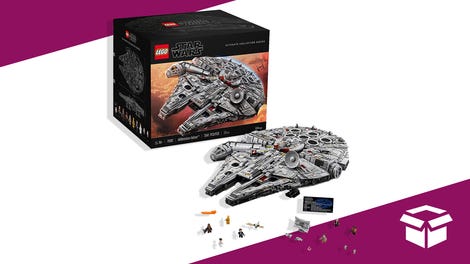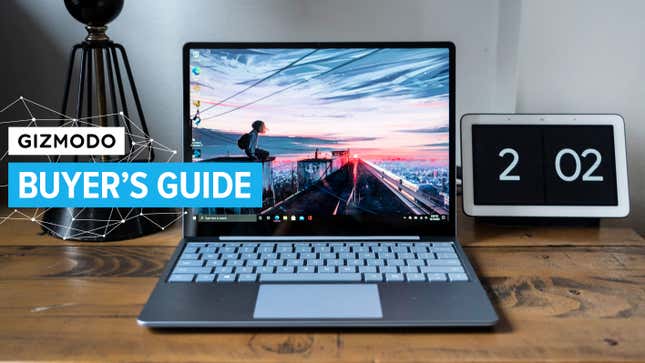
The best tablets are more capable than ever, but sometimes, you just need a full computer. That’s why the laptop is still very much alive, versatile enough to serve needs from gaming to 3D modeling to simply having a convenient all-in-one experience. Some even come with their own graphics cards and are strong enough to replace desktops. And even more, like 2-in-1s, stretch what the form factor is capable of, bringing in some tablet like convenience with touchscreens and the ability to fold the keyboard out-of-sight.
But that means it can be hard to tell the best laptops apart from each other. Let’s walk through which product is best for you.
What laptop should I buy?
Your laptop buying decision should really be defined by what you plan to do with the device, and how much money you have to spend. If it’s going to be your primary computer, sit on a desk, and never really move around or get packed in a bag, you don’t need to worry about size and weight. If you want to play video games, you’re going to need a faster processor. If you’re a road warrior, you want something small and light and hard to break.
In our list below, we’ve identified several of those use cases and identified our top laptop pick for you. If money’s no object, you don’t have niche power user concerns like financial modeling, and you don’t care what operating system the hardware runs, go for our best overall laptop. Anything else, read on.
Finally, keep in mind that one of the rules of consumer electronics is that as soon as you buy a new gadget, it will immediately be eclipsed by a newer, faster, better model. We can say with confidence that chipmakers will continue to release powerful new processors in 2023, and laptop makers will roll out new products. But generally speaking, the first few months of the year are when we see the most new products announced and released.
The editorial staff of Gizmodo independently test and review each product found in our Buyer’s Guides. If you purchase something using our affiliate links, G/O Media may earn a commission. Affiliate linking does not influence our editorial content.
Best Overall Laptop — MacBook Air with M2
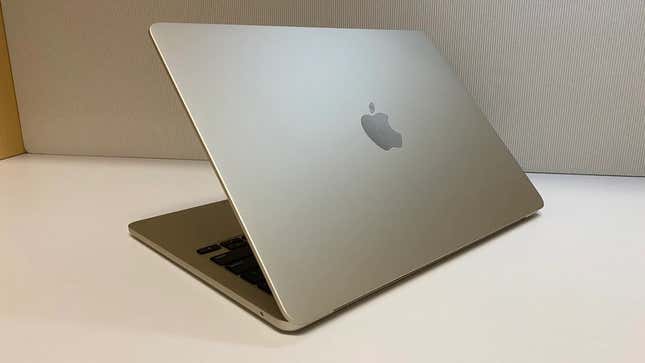
Windows fans (let’s be honest, Apple haters), we’re sorry. But we can’t deny it. While the Dell XPS 13 usually gives Apple a run for its money when it comes to the best overall laptop for any given year, that machine’s higher-end models now sport a design revamp that we didn’t exactly love. More importantly, though, the M2 processor is just too impressive to count out, and the new MacBook Air gives it a lovely shell that makes older MacBooks feel immediately antiquated.
The new Air’s not without its faults, coming out to generally positive reviews but also complaints from power users about throttling and faulty cooling hardware. But for general purpose tasks and some light prosumer work, it’s slick, fast, and surprisingly competitively priced with its Windows competitors.
Thin bezels, a 1080p FaceTime camera, a new flat shape that’s thinner than ever, a full function row, and MagSafe 3 charging are all here to freshen up how you interact with the device, plus there’s some new colorways. For the performance-minded, you can expect to get about 8,975 points in Geekbench’s multi-core tests and finish Blender benchmarks in about 4 minutes and 33 seconds. Battery life lasted over 14 hours in our tests, too.
A starting price of $1,199 also doesn’t make it cheap, but puts it in the same ballpark as competitors like the Dell XPS 13 or our next entry, the Asus Zenbook S 13. Our model was highly performant at $1,499. If you want to avoid the cooling issues that some have complained about, you can get the MacBook Pro 13-inch with an M2 processor, which has a fan, but you’ll miss out on the revamped design that helps make this Air so tantalizing. There are now larger MacBook Pro models with M2 chip variants, fans, and a more modern design, although they start to edge into a different price category.
Best Premium Laptop — Apple MacBook Pro 14-Inch and 16-Inch

If you want the power of an M2 chip and then some, as well as a fan and the modern design that’s missing on the MacBook Pro 13-inch, you’re going to be well served by the Apple MacBook Pro 14-Inch and 16-Inch, which have models with both the M2 Pro and M2 Max chips.
These start at $2,000, have a lot of screen real estate for their respective sizes (though still have a notch), have a 1,080p FaceTime camera, and feature a full function row. It’s a proven design, which makes sense why it’s since moved over to the Air, and if you’re still using a Pro with a touchbar, it’s time to move on.
The M2 Pro and M2 Max chips debuting in this generation of MacBook Pros are also plenty powerful, though they’re not the same kind of game changer the M1 series of chips was. If you’ve already got an M1 Mac, you can probably hold on to it a while longer, but the M2 Pro we tested in our unit was able to push through most of our time-centric benchmarks in two minutes, as opposed to four minutes on the M1 Max.
What’s maybe most impressive about this laptop is that it can actually be a capable gaming machine with the right support. Apple’s been working on getting developers to port their games to Apple Silicon since it debuted, and while the selection of native titles is still smaller than what you’ll get on Windows, these ports run well when they happen. We were able to consistently top 60 fps at a 1,920 x 1,200 resolution when playing Resident Evil Village on the MacBook Pro 16-inch with a Mac Pro, and while that’s not quite at the level of a premium gaming laptop, it’s enough for plenty of players.
There’s no doubt that this generation of bigger screen MacBook Pros is pretty similar to the last generation, and we expect things to shake up more in future generations, with advances like touchscreens and OLED rumored to be on their way. For now, though, these are among the best premium productivity laptops you can get.
Best Windows Laptop — Asus Zenbook S 13 OLED
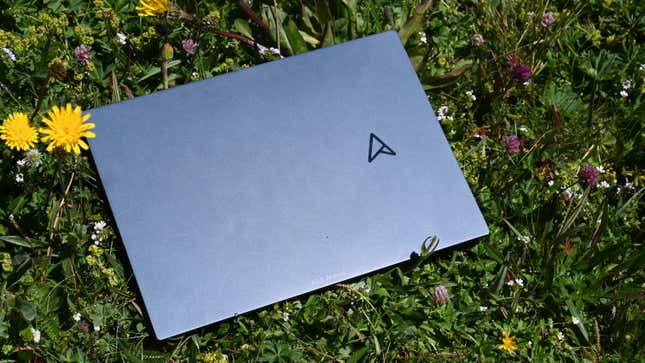
Normally, the Dell XPS 13 is a strong contender for this category, but that line failed to impress us this year. The XPS 13’s classic, tried-and-true chassis is now reserved only for lower-end models, and higher-end models now use a new chassis that we found hard to look at and almost as hard to use. This year, we’re suggesting Apple haters check out the Asus Zenbook S 13 OLED instead.
This year actually saw quite a few laptop lines typically regarded as budget contenders put out strong mid-to-high range entries. We almost gave this spot to the Acer Swift 5, which entered the big leagues this year with an attractive chassis and beefier specs than we’ve seen in past models.
But the Zenbook S 13 OLED is so lightweight, long-lasting, and pleasant to look at that it easily rivals the new MacBooks, let alone other mid-to-high range laptops.
Powered by AMD’s Ryzen 6000 series chips, our review praised this laptop for having “a powerful right hook for a featherweight,” hitting 7,498 points on Geekbench’s multi-core test and finishing a Blender benchmark in four minutes and 19 seconds, which is faster than what we experienced on the new MacBook Air.
That featherweight point is important, though— it’s actually smaller than the new MacBook Air on every metric except thickness, where it is 0.2 inches larger, but it makes up for that by being half a pound lighter.
It’s also got a proper 16:10, 13.3 inch, 2880 x 1800 OLED display, which generally outclasses the (still good) 13.3 inch, 2560 x 1664 Liquid Retina display on the new MacBook Air.
At 11 hours and 10 minutes, its battery doesn’t measure up to the M2 Air’s, but it is longer lasting than the Swift 5 and is impressive for such a small OLED device.
Ultimately, you’ll lose out on some niceties by choosing this device over the MacBook Air M2, as the screen has less real estate, the chassis attracts dust and fingerprints, the webcam is only 720p, and the whole machine is generally less performant. But if you must go Windows, this is a tiny companion that can do a lot even on lower-end configurations, which currently start at around $1,299.
Best Gaming Laptop — Razer Blade 16
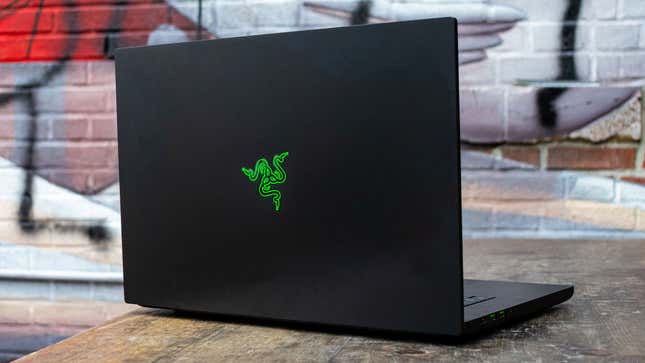
Over the past decade, Razer’s grown to be something of a gaming equivalent to Apple, for good and ill. That means its Razer Blade 16 laptop is a good, if expensive, bet.
This year’s model sees the Blade keeping its MacBook-like chassis, but upping its screen size to 16 inches. It also swapping out its components for the latest Intel 13th gen HX-series chips, with GPU options ranging up to the RTX 4090. Despite that impressive power, though, the machine remains thin and light (for a gaming laptop), weighing just 5.4 pounds and coming in at only 0867 inches thick.
Ports are plentiful, which is necessary for gaming peripherals, and display options range from 1,920 x 1,200 at 240Hz to 3,840 x 2,400 at 120Hz. The display is Mini LED, which makes it plenty bright even in direct sunlight.
The new Razer Blade’s also a bit easier to buy than some past models, as the “Advanced” model distinction that used to list certain configurations as a separate machine is now gone. That said, its price still ranges from $2,699 to over $4,200.
Best Budget Laptop — Microsoft Surface Laptop Go 2
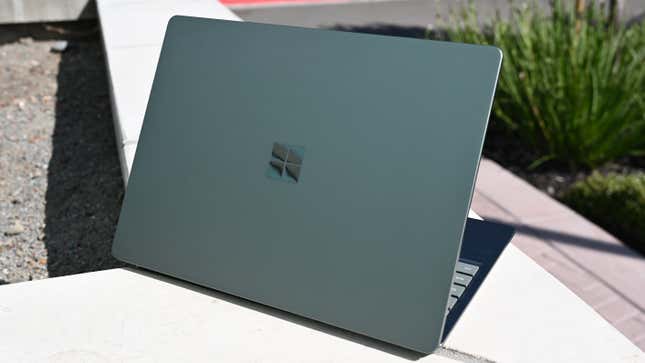
‘Tis the holiday season, and many students are marching off to school, where they won’t need to do much more than take notes or operate browser-based apps. For those buyers, we recommend the Microsoft Surface Laptop Go 2. While we had some harsh things to say about its keyboard and the specs on its $600 base model, we also loved its attractive design and inclusion of a full-fledged Windows OS, something you won’t get on a Chromebook.
Push up to $700, and you get reasonable specs, including 8GB of RAM and a 128GB SSD, which you really shouldn’t go below in 2022. For $800, you can get the same model that we reviewed, which bumps your SSD up to 256GB.
You aren’t going to do more than the basics on this laptop, but like our review pointed out, “the sub-$800 price point is something of a blind spot for PCs.” You could get a high-end Chromebook, but that comes saddled with its own limitations.
Our reviewer for this device, Phil Tracy, put it best. “The Surface Laptop Go 2…is an easy laptop to recommend to a parent shopping for their kid or an adult buying for their parent: a simple, reliable, no-nonsense PC that runs on a familiar operating system and has a premium design free from any bells and whistles.”
Best Budget Gaming Laptop — HP Victus 15
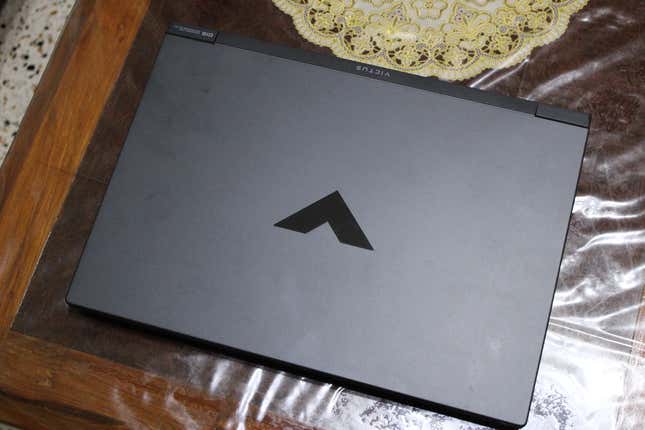
PC Gamers have to put up with a lot. From shoddy ports to hard-to-procure components, it’s sometimes enough to make you want to defect to the console crowd. Pricing for even mid-tier gaming PCs doesn’t help that, as it’s often significantly more costly than what you’ll find on even high-end console models.
The HP Victus 15 isn’t free from compromise, but it’s got great value. Starting at $800, it’s far from the top-of-the-line, but still allows you to get in the PC (and portable) flexibility without paying significantly more than you might for, say, a PS5. Our configuration cost $1,209, which is a bigger ask, but snagged us an RTX 3050 Ti, 16GB of RAM, and 512GB of storage. If ray tracing isn’t important to you, you might be able to make do with the cheaper models that use a GTX 1650.
Aside from the internals, what the Victus 15 gets you is the wide variety of I/O that gamers need, an unintrusive (if plasticky) design, and a 144Hz screen that allows for smoother gameplay and surprisingly deep blacks. It can also perform above its price point, hitting 96 fps on Shadow of the Tomb Raider’s 1080p benchmark during our testing.
If you’re the type of person who cares more about fundamentals than flash, there’s plenty to work with here.
Best Modular Laptop — Framework Laptop 13

Perhaps the biggest disadvantage to buying a laptop over a regular desktop is that, if you want to upgrade it, you’ll usually have to get a whole new device. The only components that most laptops typically leave room to change are RAM and storage, but if your laptop has those soldered in, which is common on thinner models, you won’t be able to swap those, either.
Repairability is also difficult on laptops, as they’re usually so tightly packed that you can’t easily service them yourself.
Framework wants to address both of these issues, with its Framework Laptop 13 offering your typical thin and light productivity features, and its newly revealed Framework Laptop 16 taking things a step beyond, for gamers and people with heavy workloads.
We’re going to stick to the 13 here, as the 16 still has yet to launch. While the promise of a laptop with a swappable GPU module is tempting, we also want to see how much support it gets before recommending it.
The way Framework Laptops work is that they have a single mainboard inside your typical clamshell body, but things like ports, RAM, storage, and even your keyboard and screen are swappable though Lego-like modules. You can even buy a Framework Laptop either pre-assembled or as a selection of parts that you have to put together yourself. And while your mainboard will sit at the heart of everything, even that’s swappable. This means that, should something break or become obsolete, you won’t need to throw away your whole laptop. You can even work older parts into side projects, with Framework providing cases for you to turn old mainboards into mini-PCs.
It’s a refreshingly upgradeable, repairable, and even customizable approach. If you want four 3.5mm audio jacks on your Framework, you can do that. The big limiting factor here is that all of your upgrades will be limited to what’s available in the Framework marketplace, although the company promises it’s providing open source documentation for other companies to make parts for the Framework Laptop 16. Still, Framework has heavy control over pricing and which modules are available, though the marketplace’s stock is currently varied and fairly priced.
Best 2-in-1 Laptop — Lenovo Yoga 9i
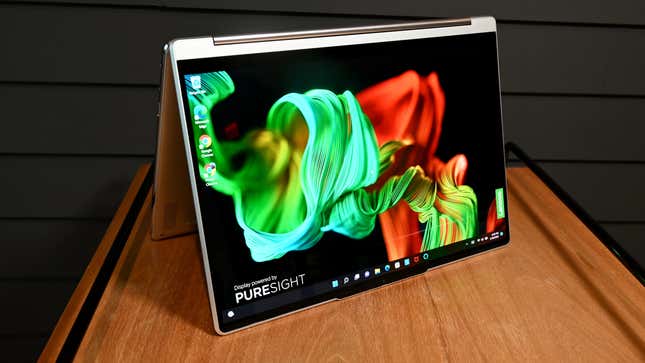
Mid-range and premium two-in-one laptops are currently facing a bit of a shake-up across the industry, as detachables are becoming less common outside of budget price points. Convertibles, however, are still here to stay, and the Lenovo Yoga 9i is one of the best.
Boasting the same 12th Gen Intel chips you’d find in comparable laptops, this machine’s got OLED options up to 4K, a 14 inch screen, and a Bowers & Wilkins soundbar speaker built into its hinge, making it powerful both for design and entertainment. Its rounded edges and a port-loaded metallic body make it both sleek and compatible, while its fingertip shaped keys and keyboard shortcuts make it convenient to use. The Precision Pen 2 doesn’t slide into the laptop, but that lets it be larger and more comfortable to use.
The Yoga 9i is also lightweight enough at 3.1 pounds, and lasted just under 9 hours on our battery test.
Starting at $1,229, the Yoga 9i can also be affordable, although options like the OLED screen will push it closer to the $1,729 price point our review model had.
Meanwhile, if 14 inches doesn’t sound like enough to you, consider the HP Spectre x360 16, which we called “a powerful work of art” thanks to its large display, beautiful design, and discrete GPU option.
This list is updated regularly with new recommendations and product forecasts.

